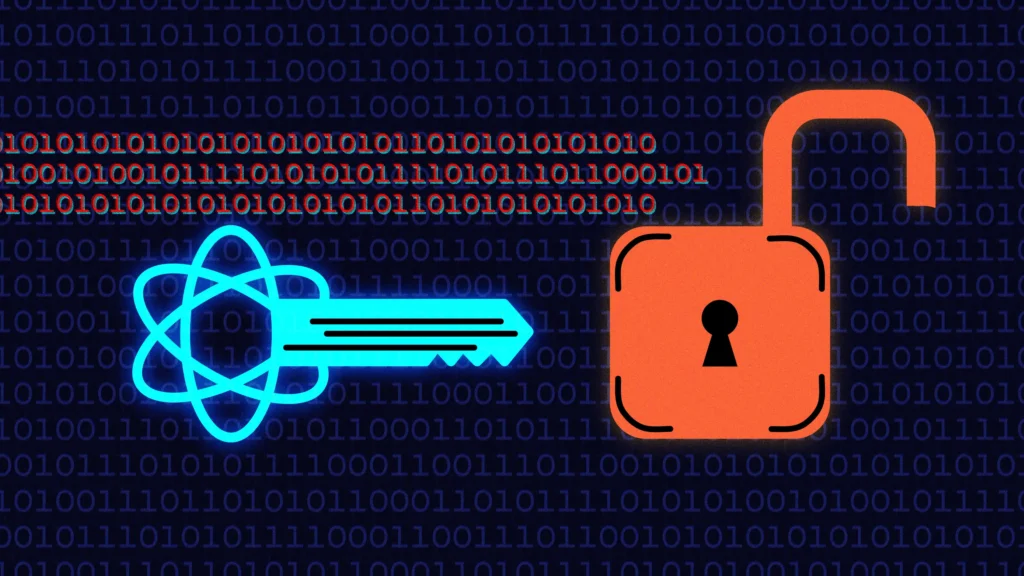As we stand on the brink of the quantum revolution, the field of quantum cryptography is emerging as a critical technology for securing data in the quantum age. Traditional encryption methods, while robust against current computational capabilities, are vulnerable to the immense processing power of quantum computers. Quantum cryptography offers a promising solution by leveraging the principles of quantum mechanics to create theoretically unbreakable encryption, ensuring the security and integrity of data in an increasingly digital world.
The Quantum Threat to Classical Cryptography
Classical cryptography relies on complex mathematical problems to secure data. Algorithms such as RSA and ECC (Elliptic Curve Cryptography) are based on the difficulty of factoring large prime numbers and solving discrete logarithm problems, respectively. These tasks are computationally infeasible for classical computers to solve within a reasonable timeframe.
However, quantum computers, with their ability to perform parallel computations, can solve these problems exponentially faster using algorithms like Shor’s algorithm. This capability poses a significant threat to classical encryption methods, as it could potentially decrypt sensitive information in a fraction of the time it would take with classical computers. As quantum computing technology advances, the urgency to develop quantum-resistant cryptographic solutions grows.
Principles of Quantum Cryptography
Quantum cryptography exploits the fundamental principles of quantum mechanics, particularly superposition and entanglement, to secure data. The most well-known application of quantum cryptography is Quantum Key Distribution (QKD), specifically through protocols such as BB84 and E91.
- Quantum Key Distribution (QKD): QKD allows two parties to generate a shared, secret key, which can then be used for secure communication. The security of QKD is based on the principles of quantum mechanics:
- Superposition: Quantum bits, or qubits, can exist in multiple states simultaneously. This property enables the creation of secure keys that are difficult to predict.
- Entanglement: Entangled particles share a special connection, where the state of one particle instantly influences the state of another, regardless of distance. This property can be used to detect any eavesdropping attempts, as measuring one of the entangled particles will immediately reveal if the communication has been intercepted.
- BB84 Protocol: Introduced by Charles Bennett and Gilles Brassard in 1984, the BB84 protocol uses the polarization states of photons to transmit a secure key. Any attempt to eavesdrop on the key transmission introduces detectable anomalies due to the no-cloning theorem and the disturbance caused by measurement.
- E91 Protocol: Proposed by Artur Ekert in 1991, the E91 protocol relies on entangled particles to generate secure keys. The security of this protocol is based on the violation of Bell’s inequalities, ensuring that any eavesdropping attempt will be detected through statistical anomalies in the measurement outcomes.
Advantages of Quantum Cryptography
Quantum cryptography offers several advantages over classical cryptographic methods:
- Unconditional Security: The security of QKD is guaranteed by the laws of quantum mechanics, making it theoretically unbreakable, unlike classical encryption which relies on computational complexity.
- Detection of Eavesdropping: Any attempt to intercept the quantum key can be detected immediately, allowing parties to discard the compromised key and generate a new one.
- Future-Proofing: Quantum cryptography is resistant to attacks from quantum computers, providing a long-term solution for data security in the quantum age.
Challenges and Future Directions
Despite its potential, quantum cryptography faces several challenges:
- Technical Limitations: Current QKD systems require specialized hardware, such as photon sources and detectors, which are not yet widely available or cost-effective for large-scale deployment.
- Distance Limitations: The transmission distance of quantum signals is limited due to photon loss and decoherence. Research is ongoing to develop quantum repeaters and satellite-based QKD to overcome these limitations.
- Integration with Existing Infrastructure: Integrating quantum cryptographic systems with existing classical infrastructure poses significant challenges in terms of compatibility and interoperability.
As research and development in quantum cryptography continue to advance, we can expect to see more robust, scalable, and cost-effective solutions emerge. Collaborations between academia, industry, and government will be crucial in overcoming the current limitations and driving the adoption of quantum cryptographic technologies.
Quantum cryptography represents a fundamental shift in how we approach data security. By leveraging the principles of quantum mechanics, it offers a path towards unbreakable encryption, ensuring the confidentiality and integrity of data in an era where quantum computers pose a significant threat to classical cryptographic methods. As we move further into the quantum age, the development and implementation of quantum cryptographic solutions will be essential for safeguarding our digital world.
From Our Editorial Team
Our Editorial team comprises of over 15 highly motivated bunch of individuals, who work tirelessly to get the most sought after curated content for our subscribers.


